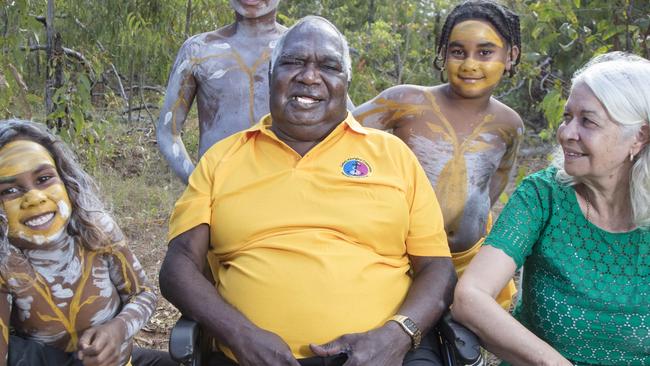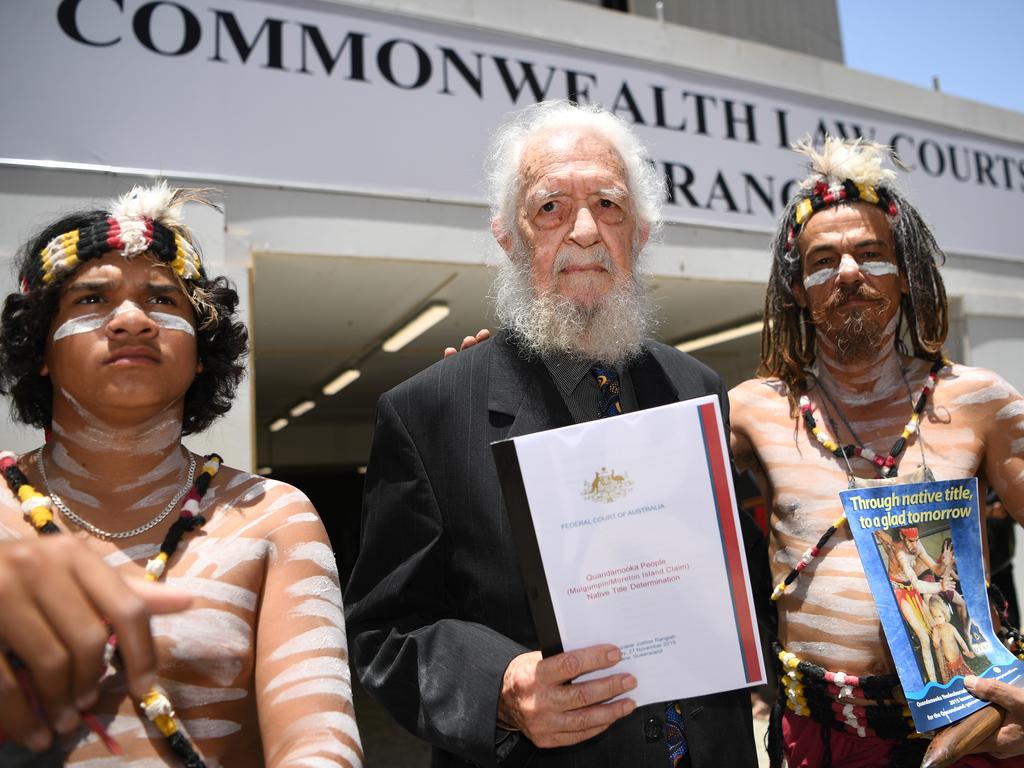Yolngu seek $700m for NT Gove bauxite mine
Galarrwuy Yunupingu is seeking up to $700m in compensation from the commonwealth over the NT Gove bauxite mine.

One of Australia’s most powerful clan leaders, Galarrwuy Yunupingu, is seeking what could be $700m in compensation from the commonwealth over the Gove mine in the Northern Territory, which began extracting bauxite from his people’s traditional lands in 1969.
Dr Yunupingu is expected to launch the test case in the Federal Court on Thursday on behalf of the Gumatj people of northeast Arnhem Land.
READ MORE: Yunupingu announces plan to sue over mine | Court challenge to Adani native title claim
The Gumatj were among the Yolngu who opposed the mine by effectively painting their land title on the historic 1963 bark petition that now hangs in Parliament House in Canberra. They were ignored, and a 1968 act of parliament allowed the Gorton government to grant mining leases over Gove to Swiss company Nabalco the following year.
Dr Yunupingu’s claim is a new approach to compensation, relying on a clause in the Constitution that says the parliament can make laws for the acquisition of property “on just terms”.
There are implications for mining and other industries if Dr Yunupingu can prove that clause 51, section 31, which refers to “just terms”, applies.
It is predicted the claim will be referred to the High Court.
“The time has come for us to settle with the commonwealth,” Dr Yunupingu, 71, said. “The Yolngu people opposed the mine and the way it was forced on our community from the outset. We were an independent, autonomous people when the crown, and then the commonwealth came and acquired our rights.
“In 1963, we sent a bark petition to the Australian parliament telling the members that they were acting without our consent, and that they would damage us.
“Our leaders drew out our title deeds, revealing our laws and rights of ownership. We asked for fairness and equity, and a fair share in the future. We were rejected. Many of our elders died of broken hearts, not being able to handle the new world.”
Dr Yunupingu has built a reputation as a skilful deal-maker since mining began in northeast Arnhem Land.
He led negotiations that in 2011 secured a benefits package worth more than $700m over 42 years.
READ MORE: Fix it or we’ll throw Constitution into the sea: Galarrwuy Yunupingu
The deal with Rio Tinto — the current operator of the Gove mine — was focused on education, jobs and business development and is paid into a future fund.
It has allowed the Yolngu to start their own small bauxite mine. They also run forestry projects, milling timber for sale and to build their own homes.
In a 2014 handshake deal with then prime minister Tony Abbott, Dr Yunupingu arranged for the Gumatj to take control of their own town, Gunyangara, through a 99-year lease. The Gumatj have received statutory payments from the Gove mine since 1978 under the Northern Territory’s 1976 Aboriginal Land Rights Act, but Dr Yunupingu maintains these payments represent just a fraction of the wealth taken from his people’s lands “and do not account for the traumatic impact the introduction of mining and other activities had on our community, which continues today”.
“We never had the opportunity to negotiate an agreement with the commonwealth and Nabalco as now occurs under the Native Title Act,” Dr Yunupingu said.
“We want to have the legal errors of the past redressed. We have suffered by the unwillingness of the commonwealth to listen, or to understand. Now, as a culmination of my life’s work, and of elders before me, I am presenting this claim for redress to the Federal Court.”
The value of the compensation claim is unclear, but The Australian understands it could be as high as $700m based on the value of the 2001 deal. The claim, if successful, is likely to take into account the statutory payments made between 1978 and 2001. It would also consider cultural loss as far back as 1969, which includes damage to sacred sites. This could increase the final payout.
The precedent for cultural loss was set in March when the High Court granted a small group of traditional owners about $2.5m for the extinguishment of their non-exclusive native title rights over 1.26sq km of the Northern Territory town of Timber Creek, which had a population of 249 at the 2016 census.
While the Gumatj are the primary landowning clan on the area affected by mining in Gove, there are a total of 13 clans in the area and it was predicted some may join the claim.





To join the conversation, please log in. Don't have an account? Register
Join the conversation, you are commenting as Logout